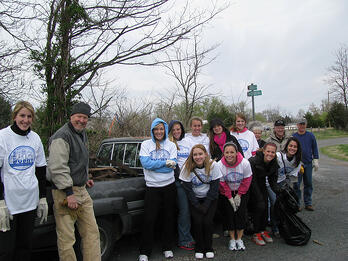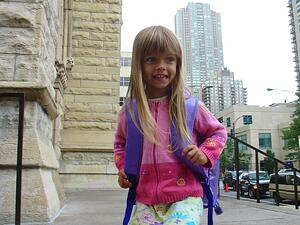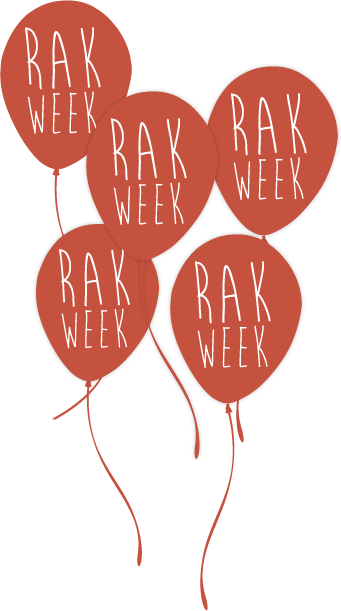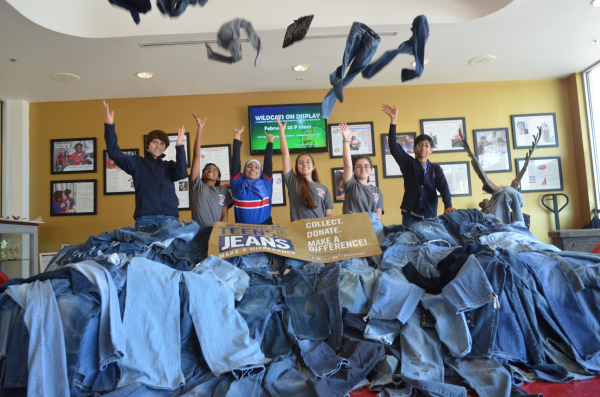New Year’s Resolutions shouldn’t be so hard that we give up on them before the end of the month. As I like to tell my kids, bigger isn’t always better and sometimes less is more. In addition, in this day and age, I don’t think resolutions should just be about self-improvement, but about how we can help others while improving ourselves. Here are 10 simple resolutions that everyone can do throughout 2015 to feel better and make a difference in their community.
to tell my kids, bigger isn’t always better and sometimes less is more. In addition, in this day and age, I don’t think resolutions should just be about self-improvement, but about how we can help others while improving ourselves. Here are 10 simple resolutions that everyone can do throughout 2015 to feel better and make a difference in their community.
-
Make an effort to perform a random act of kindness every week. Say hello to your neighbor. Offer a seat to someone standing on the subway. Wait 10 seconds before you lean on the car horn to let the car in front of you know that the light has changed! Let the person with two items go ahead of you in line at the grocery store. Yes, I know, these don’t seem like major things, but just think how you would feel if you were on the receiving end.
-
Bring good manners back in 2015! Start simple. Remember a time when we would say, “Excuse me?” when trying to politely get someone’s attention or when we bumped into someone? Manners go a long way, but unfortunately it seems we aren’t using them or passing them onto our youth anymore. Teach your kids manners through example. Forget all the new words added to the dictionary this year. Let’s make some old ones popular again. Make a resolution to add these words to your vocabulary: please, thank you and you’re welcome. Don’t hoard them for your closest friends and family. Share them liberally with everyone you interact with, especially those in retail, customer service, and public service. They need them the most! You’ll be surprised how a few kind words can make a difference in someone’s day.

-
Whenever you notice your pantry is overflowing with too many cans and boxes of food or you can’t fit one more jacket in your coat closet, this is your cue to get a bag and donate extra non-perishable food and gently used clothing. Find your local food pantry or check with a local church for donation locations.
-
Think about something that’s important to you and find a way to volunteer or donate to the cause. Sometimes, the commitment to volunteer a specific number of days or hours concerns people and may prevent them from helping. Decide what you can commit to do. Whether it’s once a week, once a month, or even a one-time event, you decide. Volunteering should make you feel good, not bad because you can’t do it all the time. There are opportunities everywhere in many forms. Take time to do the research and think about how you can use your talents to help others.
-
Practice Patience – This is probably one of the most difficult resolutions since our world has become one where we want results immediately. However, if we all practiced just a little patience, we might not lose our tempers so quickly. And, if we couple patience with our small acts of kindness, just imagine how the world would truly be a nicer place.
-
Write a letter or send a card to an old friend, someone going through a tough time or maybe an aunt, uncle, or grandparent living alone. Yes, I said, "write!" I didn't say text, Facebook message, or e-mail. Sit down with pen and paper and write about what’s going on in your life, share happy memories, and wish them the best. I don’t do this as often as I should, but I actually feel really good after writing a long letter to a friend or relative. I also absolutely love getting those letters in the mail too! Plus, you could also help extend the life of cursive writing!

-
Explore new technology. For some, that’s really easy. For others, technology can be a little scary. Watch kids with iPads, smartphones, etc., and they have no fear when trying new apps or features. But for someone who has lost entire documents in the past, I’m always a little anxious of where each double tap will take me. I've found that, when given the chance, technology can make your life a lot easier.
-
Listen more than you talk – especially with your kids. This may be difficult if your kids are like mine and don’t necessarily like to talk, but this is where listening is crucial. When they finally do decide to open up, just let them take the lead and enjoy the fact that they do want to talk to you!
-
Save some energy. We can all do a better job on this one. Turn off the lights as you leave the room. Don’t let the faucet run when you brush your teeth, put on a sweater and lower the heat, and leave the car at home and walk to your destination for quick trips. Getting out and walking through your neighborhood will also give you the opportunity to greet and get to know your neighbors!
-
Help your community as a family. It can be something as simple as making sandwiches and small care packages for the homeless, checking in on or visiting with elderly neighbors, or shoveling sidewalks for those that can’t do it. You could even host your own neighborhood food drive, volunteer at a food pantry or help clean up a local park. Ask your children how they want to make a difference in the world and figure out a way to do it together.
Happy New Year! Thank you for reading our articles and being a part of the NobleHour community. May 2015 bring you much happiness, good health, and many opportunities to make a difference in your community!



 determining schools to visit," said Deborah Kammerer, associate director recruitment & yield,
determining schools to visit," said Deborah Kammerer, associate director recruitment & yield,
 cities allowing flexible travel arrangements. They looked at cities with major airports, non-stop flights, or areas where they could visit more than one college in one trip. Also, if they had to fly, they committed to visiting at least two schools to make the trip more cost-effective.
cities allowing flexible travel arrangements. They looked at cities with major airports, non-stop flights, or areas where they could visit more than one college in one trip. Also, if they had to fly, they committed to visiting at least two schools to make the trip more cost-effective. said Kammerer. “It’s a great opportunity for admitted students to explore the campus and the variety of opportunities available.”
said Kammerer. “It’s a great opportunity for admitted students to explore the campus and the variety of opportunities available.” isn't as bitter as last year, we’ve still got a long way to go with no end in sight. And, we are not alone! Even Southern states are dealing with frigid cold temperatures, ice storms, ridiculous wind chills and hazardous driving conditions. The only people enjoying this crazy weather are the students receiving snow days. The cold days and grey skies take their toll. It’s not easy to be bright and cheery when you’re covered head to toe in fleece, wool and long underwear. It’s just really hard to be nice when you can’t feel your toes.
isn't as bitter as last year, we’ve still got a long way to go with no end in sight. And, we are not alone! Even Southern states are dealing with frigid cold temperatures, ice storms, ridiculous wind chills and hazardous driving conditions. The only people enjoying this crazy weather are the students receiving snow days. The cold days and grey skies take their toll. It’s not easy to be bright and cheery when you’re covered head to toe in fleece, wool and long underwear. It’s just really hard to be nice when you can’t feel your toes. kindness and pass it on to others. Their goals are to:
kindness and pass it on to others. Their goals are to:
 Super Bowl XLVIII
Super Bowl XLVIII Hunger,
Hunger, In addition to researching service initiatives and community projects, students can find service-oriented schools by referencing The President’s Higher Education Community Service Honor Roll. The President’s Honor Roll recognizes colleges and universities with strong community connections that encourage students to pursue civic engagement and solve community problems. Schools that receive this award are encouraging their students to excel both in academics and in committing to meaningful service.
In addition to researching service initiatives and community projects, students can find service-oriented schools by referencing The President’s Higher Education Community Service Honor Roll. The President’s Honor Roll recognizes colleges and universities with strong community connections that encourage students to pursue civic engagement and solve community problems. Schools that receive this award are encouraging their students to excel both in academics and in committing to meaningful service.  Dr. Martin Luther King, Jr. said, “
Dr. Martin Luther King, Jr. said, “ Many volunteers will use MLK Day to help elementary schools. Las January, students at
Many volunteers will use MLK Day to help elementary schools. Las January, students at 


 If your student is always on the go and the thought of being home for four to five weeks will drive you both crazy, then consider a service trip to round out the winter break.
If your student is always on the go and the thought of being home for four to five weeks will drive you both crazy, then consider a service trip to round out the winter break.  The organization provides three simple meals, basic accommodations, and basic logistics to ensure a positive and productive experience. Volunteers must cover their own travel expenses and meals on days off. The organization has a strict minimum age policy and cannot accept volunteers under the age of 15 (14 in the Philippines). All 16 and 17 year olds must be accompanied with a responsible adult.
The organization provides three simple meals, basic accommodations, and basic logistics to ensure a positive and productive experience. Volunteers must cover their own travel expenses and meals on days off. The organization has a strict minimum age policy and cannot accept volunteers under the age of 15 (14 in the Philippines). All 16 and 17 year olds must be accompanied with a responsible adult.  1. Instead of Secret Santa,
1. Instead of Secret Santa, -resized-600.jpg?width=300&height=198&name=1_(15)-resized-600.jpg)




